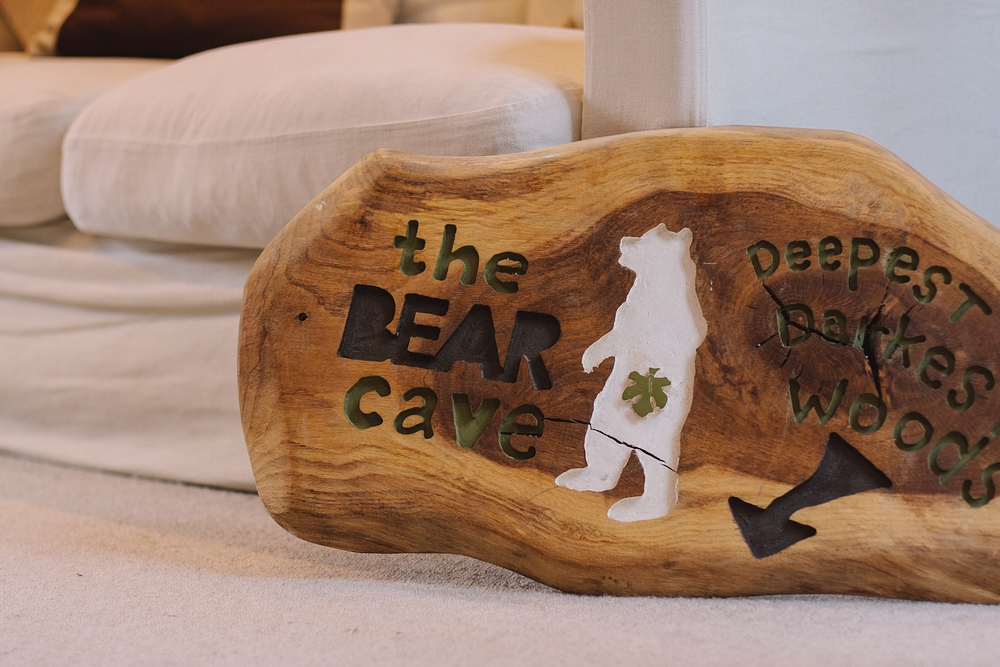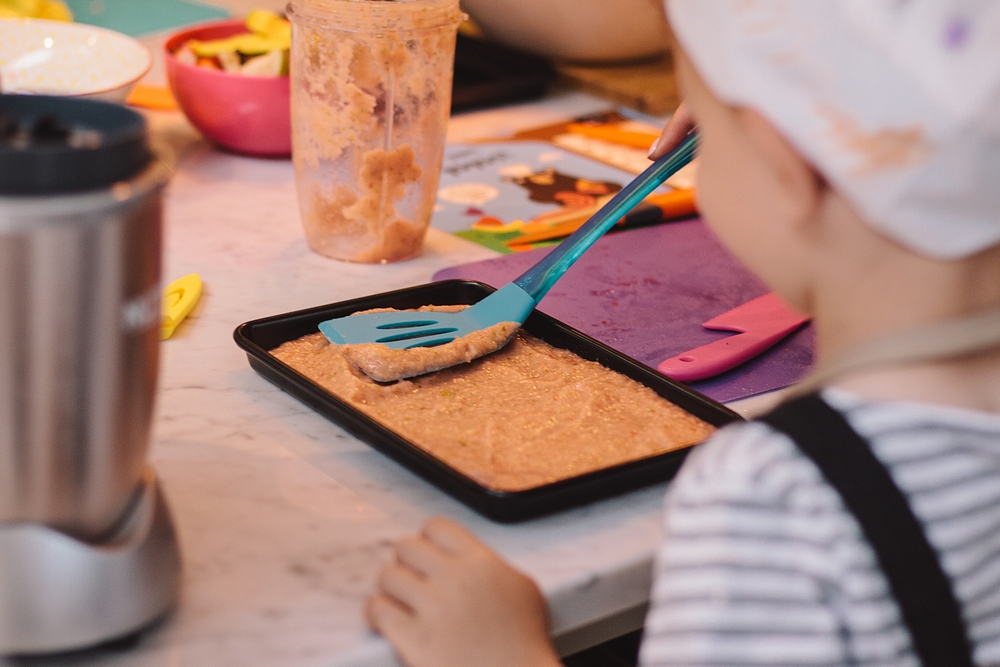Find out more about our recent adventure with BEAR Nibbles, learn how to make your own BEAR Yoyos and get some top tips for creating healthy snacking habits for young kids.
Why we love BEAR Yoyos
- 1 BEAR Yoyo = 1 of your 5 a day
- Made with 100% fruit and veg
- Made with the whole fruit – great source of fibre
- Baked at a low temperature to retain naturally occurring goodness
- Contains only natural fruit sugars
As parents we joke about snacks a lot. Anyone with small children will tell you that snacks, and food in general, can take up a lot of our thoughts throughout the day. Personally I wouldn’t dare leave the house without some snacks in my bag, in fear of Dil getting hangry. Sometimes snacks are boredom busters, sometimes they are used to get us five minutes peace while we are in the car or doing the food shop. Some of us might have kids who have one snack a day and eat three large meals, and some of us (like me) have kids who will ask for a snack while they are still eating their dinner. Parents often have a lot of questions about snacks – how many really should they be eating each day? How much snacking is too much? And which snacks are the best to offer young children? With so many different snack options out there, and so many snack products marketed at kids, it can be really hard to know that you’re making the right choice. If you’re dealing with food allergies as well it can feel impossible to find healthy and convenient snack choices for your kids.
One of Dil’s favourite snacks are BEAR Yoyos, and they are one of my favourite too because I know that nutritionally they are a great choice. We were recently invited down to London to learn a little more about BEAR fruit snacks, and we got to chat to the lovely Laura from LEC Nutrition about healthy snacking habits for kids too.






The BEAR Cave
On the day we were greeted by the BEAR team and the children were invited to play with two incredibly animated people from Sharky & George (highly recommended for parties if you’re in the London area by the way!) while we were able to grab a cup of tea and chat to Laura. We wrote down a few words that we first thought of when we thought about snacks for our children, and shared (honestly) some of the snacks that we find ourselves reaching for the most. It was clear that as parents we shared similar concerns about meeting the nutritional needs of our children – making sure they were getting enough of everything they need and not too much of the stuff they don’t.
Making our own BEAR Yoyos
Once the children came back to join us we got started on our main activity – baking our own BEAR Yoyo fruit snacks! Although we’ve been a big fan of BEAR for a long time, I’ve always remained a little sceptical of their ‘no added nonsense’ claims. It seems many of the mums agreed, and we were all wondering what kind of preservatives BEAR used in their fruit snacks. After reading the instructions for making our own BEAR Yoyos we were all very pleasantly reassured that there really is nothing but fruit and veg in there! It’s actually very simple to create your own Yoyos at home, and BEAR have been kind enough to let me share the method with you all. The full instructions are over on my Instagram story highlights.
We began by chopping up the fruit we needed to create our BEAR Yoyos. We used 2 apples, 1 pear and a few strawberries. These were then whizzed up and then poured out into a greased baking tray. When BEAR make Yoyos, the fruit and veg is simply pressed (with something a little bit like a big potato masher) but to make Yoyos in your own kitchen, you might need a little help. Make sure the fruit pump is evenly spread and quite thin, then bake in the oven for approximately 6 hours – until the mix is no longer runny and is starting to peel away at the sides. Once the fruit is cooled you should be able to lift the sheet out of the tin, then cut into strips (a pizza cutter is great for this!) and roll into your Yoyo shapes!






Limiting our children’s free sugar intake
After we’d made our Yoyos the children were able to go decorate their own special BEAR Yoyo packaging, while we were able to chat more about healthy snacks habits with Laura and the BEAR team. One of the biggest concerns that came out of our morning chat was our children’s sugar intake, finding out how we can help them to make the best and healthiest choices. Laura explained the difference between naturally occurring sugar and ‘free sugars’. Free sugars are the ones added to our food, either at home by ourselves or by a manufacturer, and these are the ones we need to limit our intake of. Free sugars are called this because of the way the sugar cells are made up, so even naturally occurring sweeteners like honey and agave which are added to food are considered free sugars. Sugars that are naturally found within the cell walls of fruit (fructose) or dairy (lactose) are not free sugars, so aren’t the ones we are recommended to cut down on.
Laura showed us some slides of BEAR Yoyo fruit snacks, and we were able to compare them to some other fruit based products. Below you can see that within the BEAR products the sugar cells have remained intact, so the sugar in a Yoyo is not a free sugar.

BEAR Processing Technique
The reason for the difference between the BEAR products and those made from concentrates or juices is the amount of intact cellular structure . BEAR Yoyos retain their sugar cells due to their manufacturing method and processing techniques. Many fruit products on the market have been heavily processed at high heats and lots are actually made from highly concentrated fruit juices or concentrates, meaning the structure of the cells are already destroyed and their sugar content is made up of free sugars. For more information on sugar intake take a look at Laura’s Spotlight on Sugar post.
BEAR’s processing technique is pretty unusual within the industry, and it has more benefits than just keeping our kid’s free sugar intake low. Because BEAR use the whole fruit, just like we did when we made our own, their products are a great source of fibre which is essential for healthy growing kids. A four year old child needs about 9g of fibre a day, and a BEAR Yoyo provides 1g, which is about the same as a small bowl of porridge or an apple. Thanks to BEAR baking their products slowly at a really low temperature most of the naturally occurring vitamins and nutrients are retained.





Healthy Snacking Tips for Kids
While I had the pleasure of hanging around with the BEAR team and a top dietitian like Laura I was able to pick up some really brilliant tips for helping out kids to snack smart.
How much should my child be eating between meals?
Children aged over 1 should ideally be having 1-2 snacks a day, alongside 3 healthy meals.
Portion sizes should be about the size of their fist, or a cupped hand. This applies to fresh fruit, so if you’re offering dried fruit as a snack it would be a smaller portion.
Which type of snack should I choose?
Laura is a mum, and she gets it. Sometimes our kids eat snacks because they are hungry, sometimes they ask for snacks because they are bored, and sometimes we offer a snack to keep them happy during a trip to Tesco. The reason why you’re offering a snack will dictate which kind of foods would be the best choice.
If your little ones are genuinely hungry between meals then try pairing proteins and carbs. Something like a piece of toast with peanut butter would be a great healthy choice and a filling snack for little tummies. Fibre is also a great snack option and really important in children’s diets, so try offering things like cereal or whole fruits.
If you’re offering a snack for another reason, or you suspect they are asking for a snack out of boredom or habit instead of hunger then offer something less filling like a rice cake. This means that they’ll be less likely to fill up on snacks before meals.
How much should I worry about sugar?
Keeping our children’s free sugar intake low is really important, but it shouldn’t be our only focus. If we make sure they are eating enough protein, carbohydrates, fibre etc plus getting all the nutrients they need then we are doing pretty well. I really enjoyed this post by Laura about focusing on fibre, not sugar.
If something has under 15g of sugar per 100g then that’s generally a pretty good choice, and remember that naturally occurring sugars like those found in fruit or in BEAR Yoyos aren’t the ones we need to focus on cutting down.
For loads more snacking tips check out the LEC Snack Guide for children.
We had so much fun at the BEAR event with their team, and I genuinely took so much away from it which is why this post is so long! Hopefully I’ve managed to share some of the tips I learnt, and you feel more confident making healthy snack choices for your kids. I feel really happy knowing that one of the snacks Dil loves is a brilliant choice nutritionally too, so we’ll continue to keep the snack drawer stocked with BEAR Yoyos!
*This post is in collaboration with BEAR but all thoughts and opinions are my own as usual*


They sound great and healthy too! I like the bear packaging and the inviting colours of the packets. Bet kids love these! Fun and happy pics!
These look like so much fun to make. And it is so good to know that snacks like this really are pure fruit and healthy for kids (and us). My two love a yoyo so I feel much better about buying them now.
Wow what a fab event. So much info as to why healthy snacking for kids is super important x
I love these, the children I teach go crazy for them and Love collecting the cards! Your pictures are fab too
My daughter absolutely loves these. She was a big fan when she was little, and now at 11 she still thinks they’re fab!
You have just made my four year olds life by revealing the recipe to these bear yo yos! He absolutely loves them! My boys love snacks and it is hard to always get them to have the healthy option, this post is really interesting and I will definitely be saving it for all the sugar and snack advice Laura has shared xx
I loved Yoyo’s when we lived in the uk. I must admit to eating a few on my son. But I never knew exactly how they were made!
refined sugars are a problem, I only know because my sister-in-law did a massive paper on it for her Doctorate. Watching out for natural sugars in fruit can be an issue if you are Diabetic. It is a fine balance and even we are looking for more protein in our diets to stop nibbling or grazing between meals.
Great post and thanks for Sharing
John M
That’s such a great activity to do with the kids. Kids love to help cook in the kitchen. I bet they had a lot of fun with this and that the food was healthy is a plus 🙂